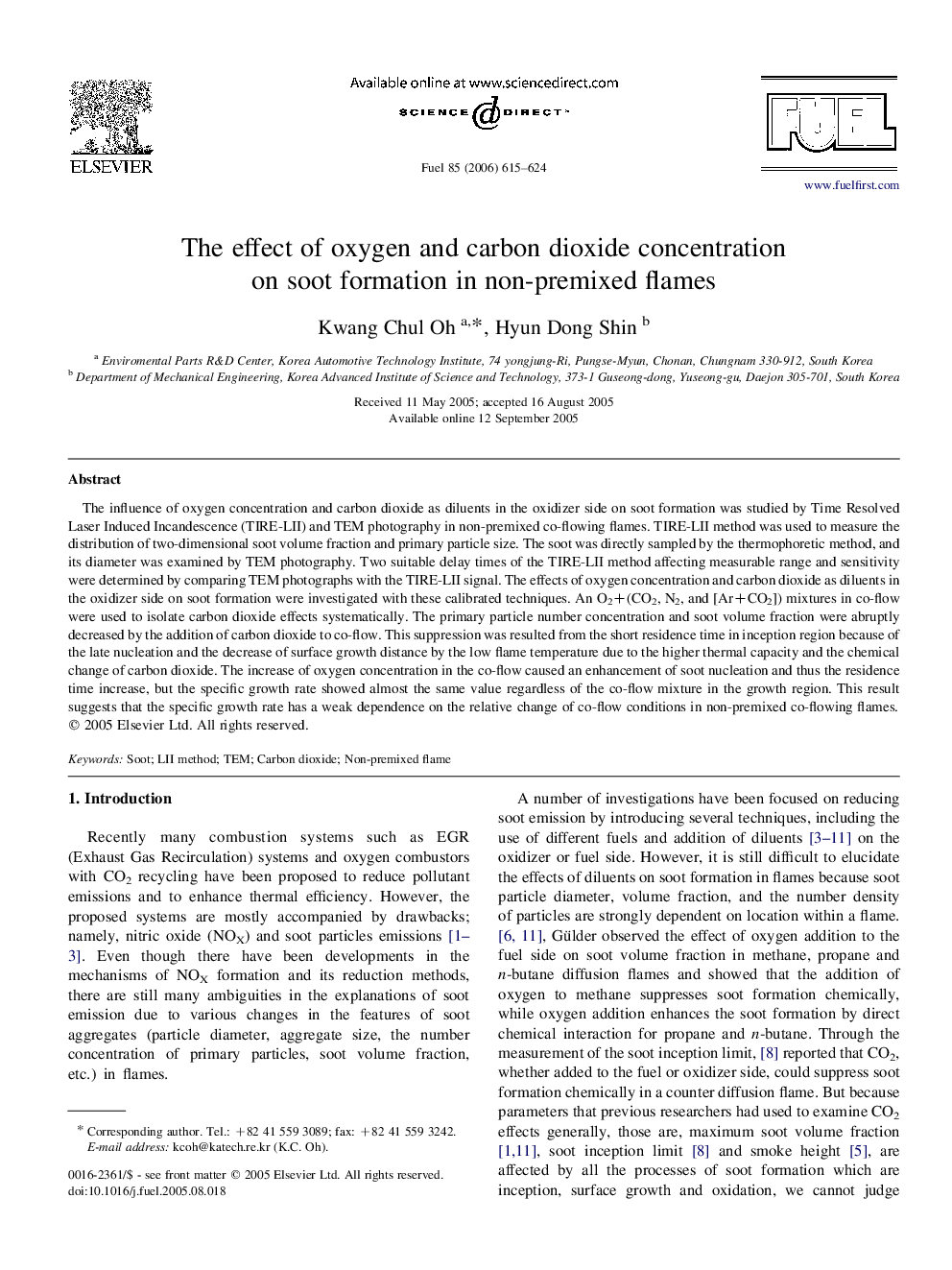| Article ID | Journal | Published Year | Pages | File Type |
|---|---|---|---|---|
| 208757 | Fuel | 2006 | 10 Pages |
The influence of oxygen concentration and carbon dioxide as diluents in the oxidizer side on soot formation was studied by Time Resolved Laser Induced Incandescence (TIRE-LII) and TEM photography in non-premixed co-flowing flames. TIRE-LII method was used to measure the distribution of two-dimensional soot volume fraction and primary particle size. The soot was directly sampled by the thermophoretic method, and its diameter was examined by TEM photography. Two suitable delay times of the TIRE-LII method affecting measurable range and sensitivity were determined by comparing TEM photographs with the TIRE-LII signal. The effects of oxygen concentration and carbon dioxide as diluents in the oxidizer side on soot formation were investigated with these calibrated techniques. An O2+(CO2, N2, and [Ar+CO2]) mixtures in co-flow were used to isolate carbon dioxide effects systematically. The primary particle number concentration and soot volume fraction were abruptly decreased by the addition of carbon dioxide to co-flow. This suppression was resulted from the short residence time in inception region because of the late nucleation and the decrease of surface growth distance by the low flame temperature due to the higher thermal capacity and the chemical change of carbon dioxide. The increase of oxygen concentration in the co-flow caused an enhancement of soot nucleation and thus the residence time increase, but the specific growth rate showed almost the same value regardless of the co-flow mixture in the growth region. This result suggests that the specific growth rate has a weak dependence on the relative change of co-flow conditions in non-premixed co-flowing flames.
